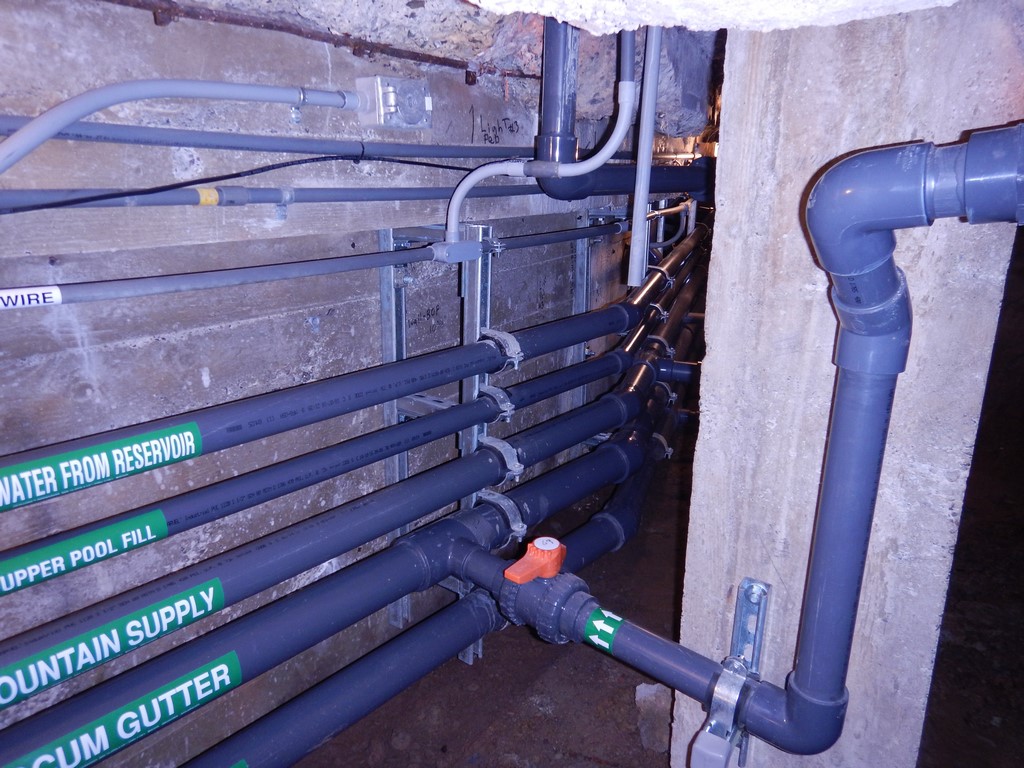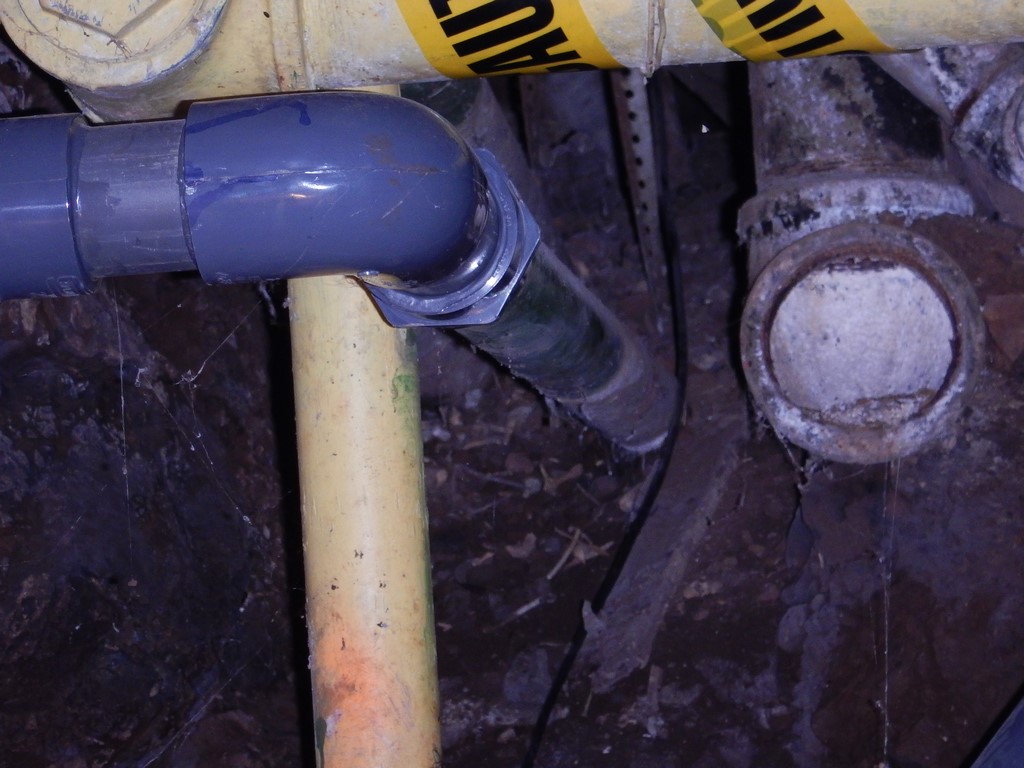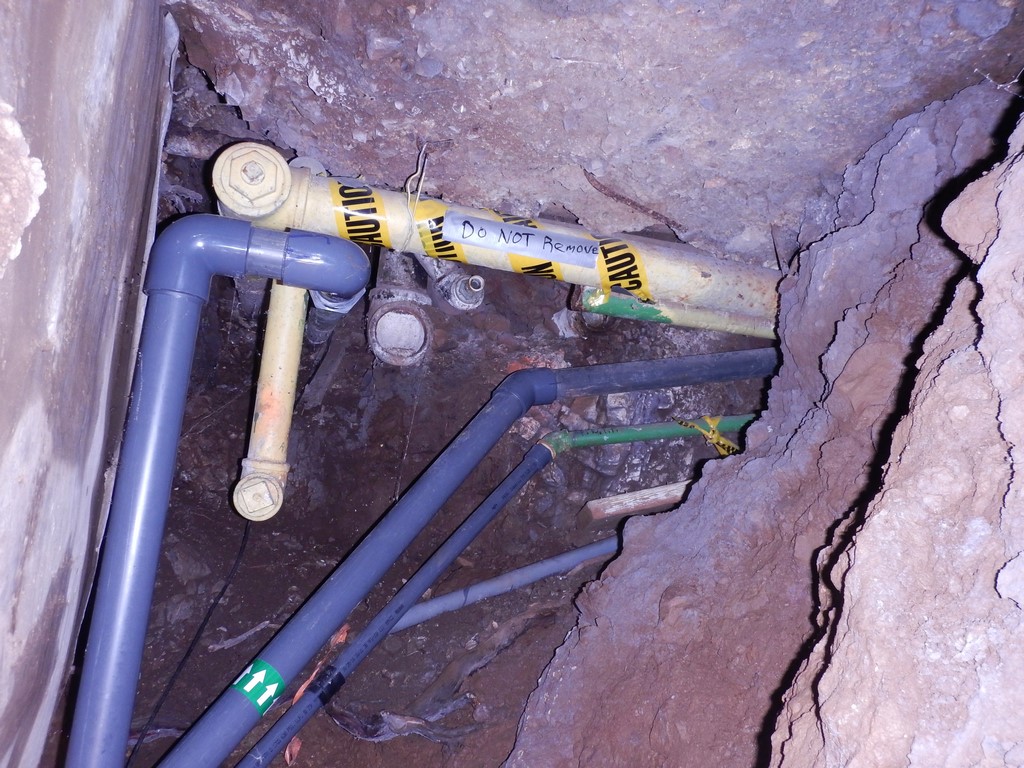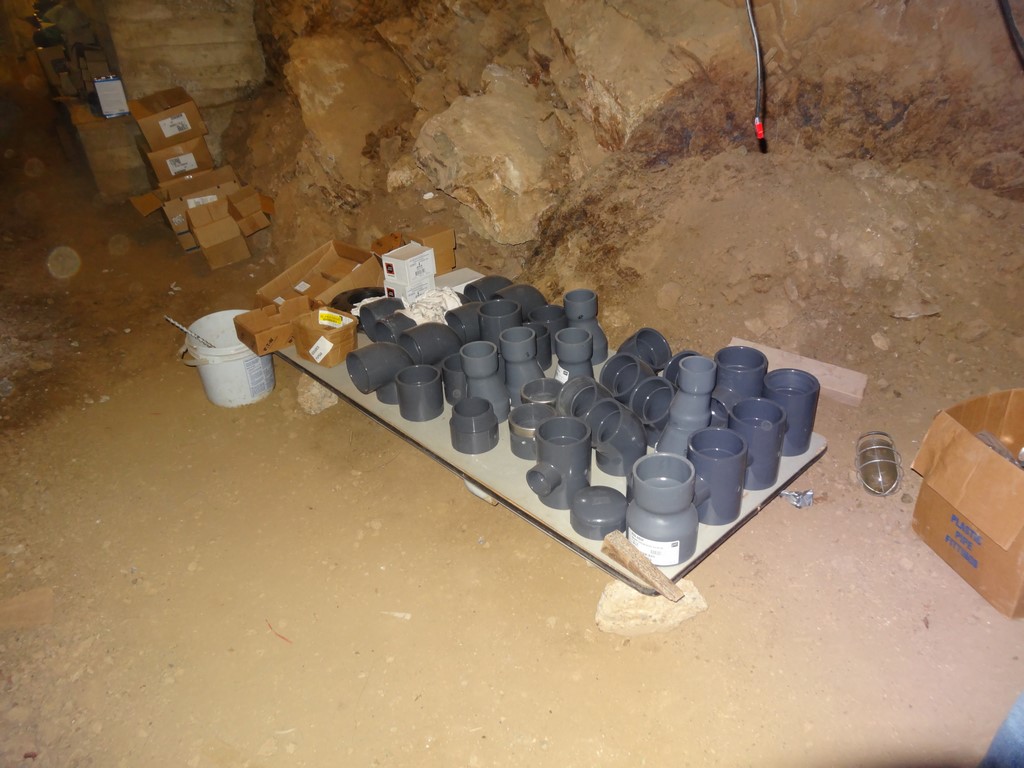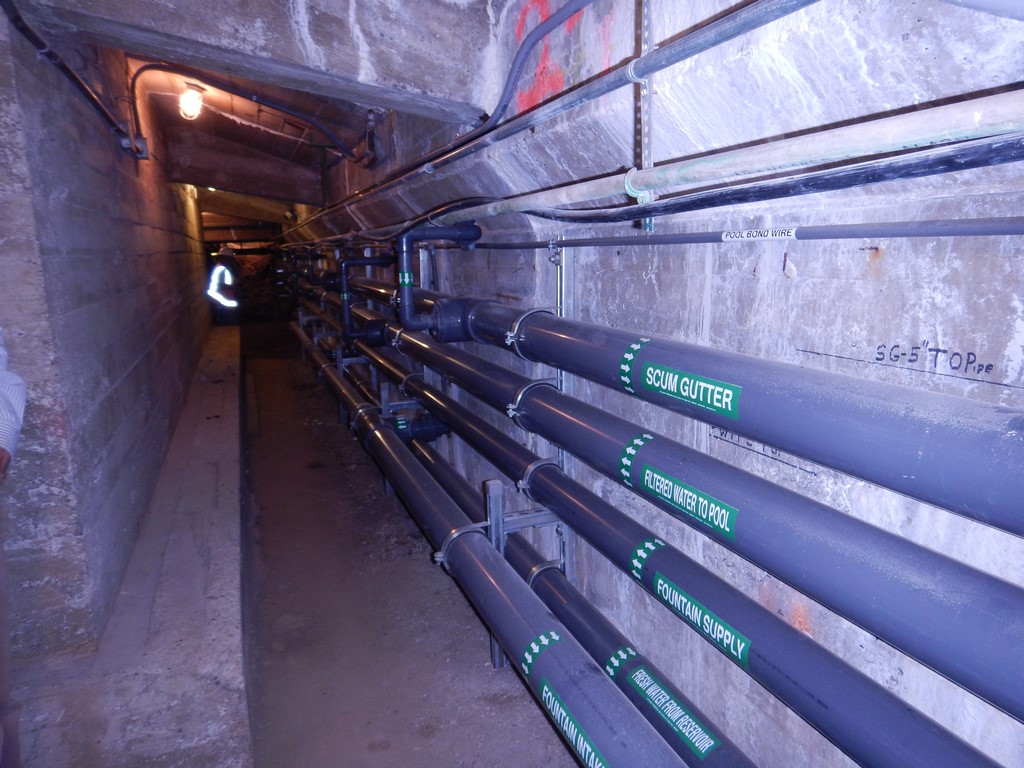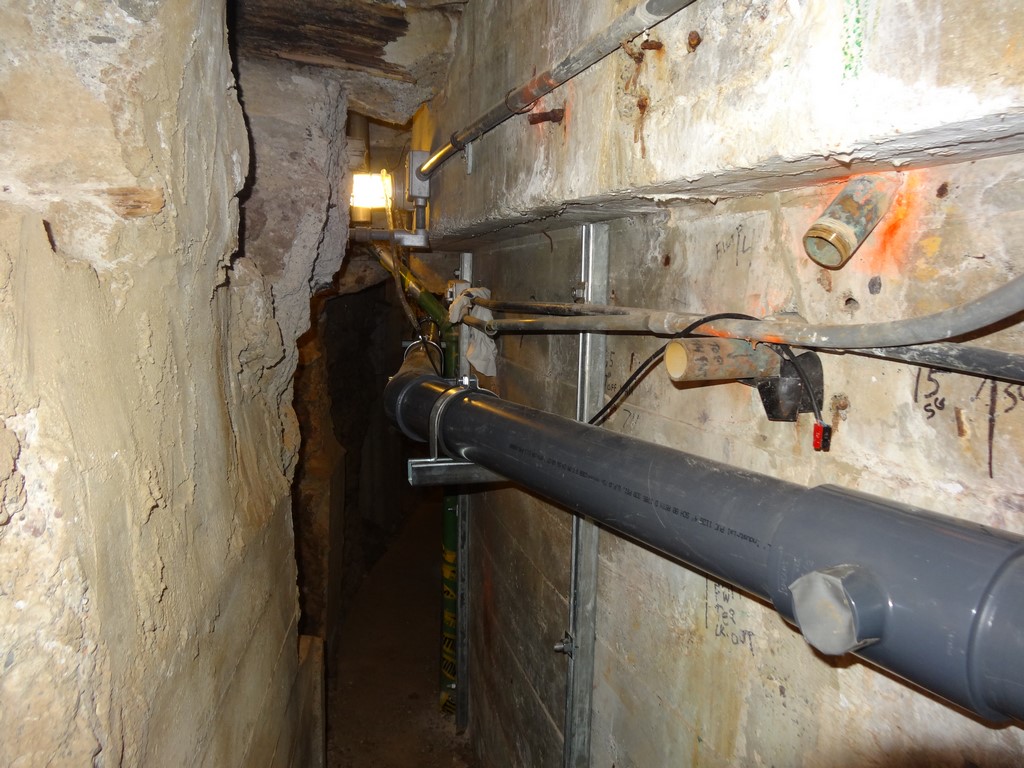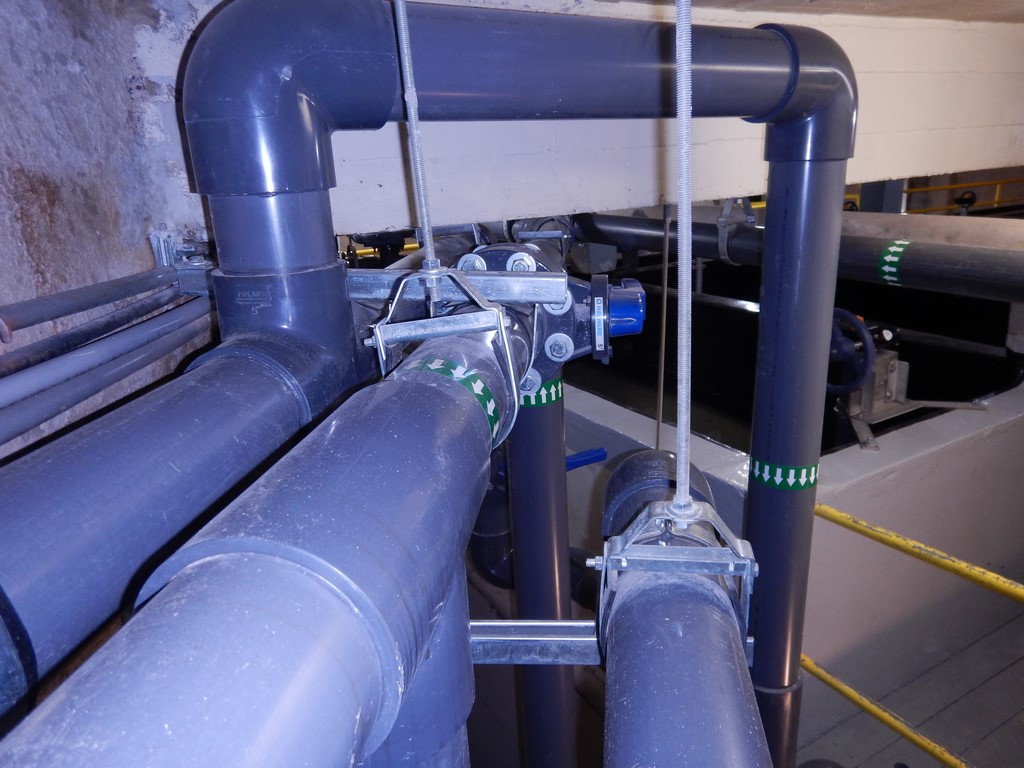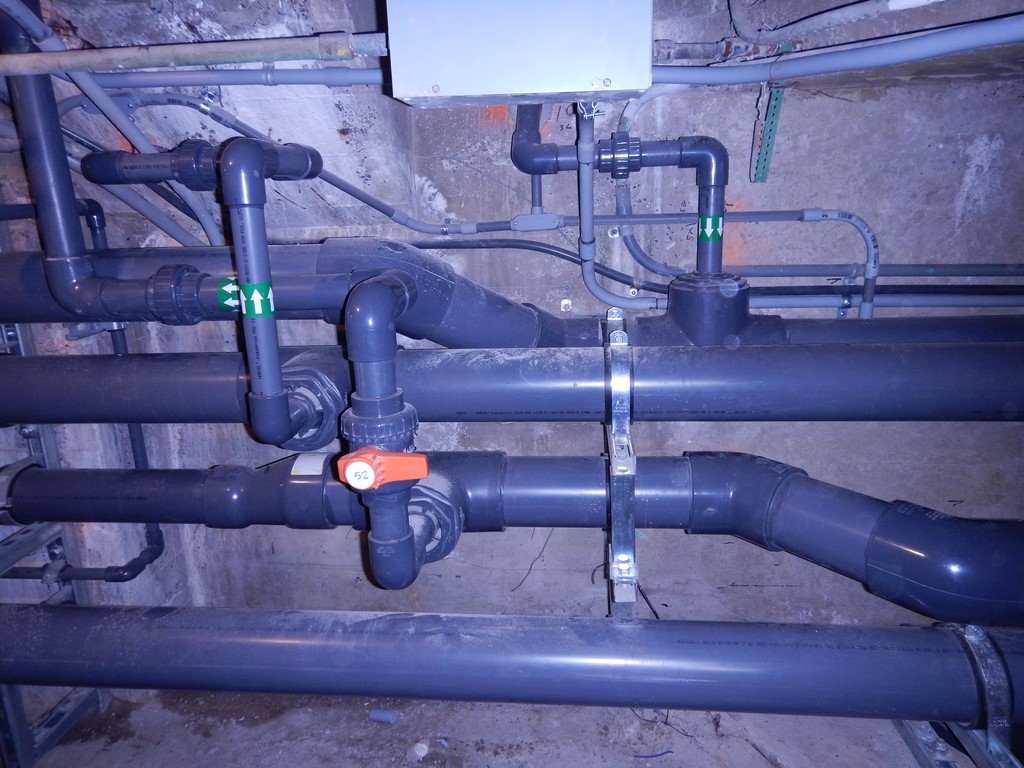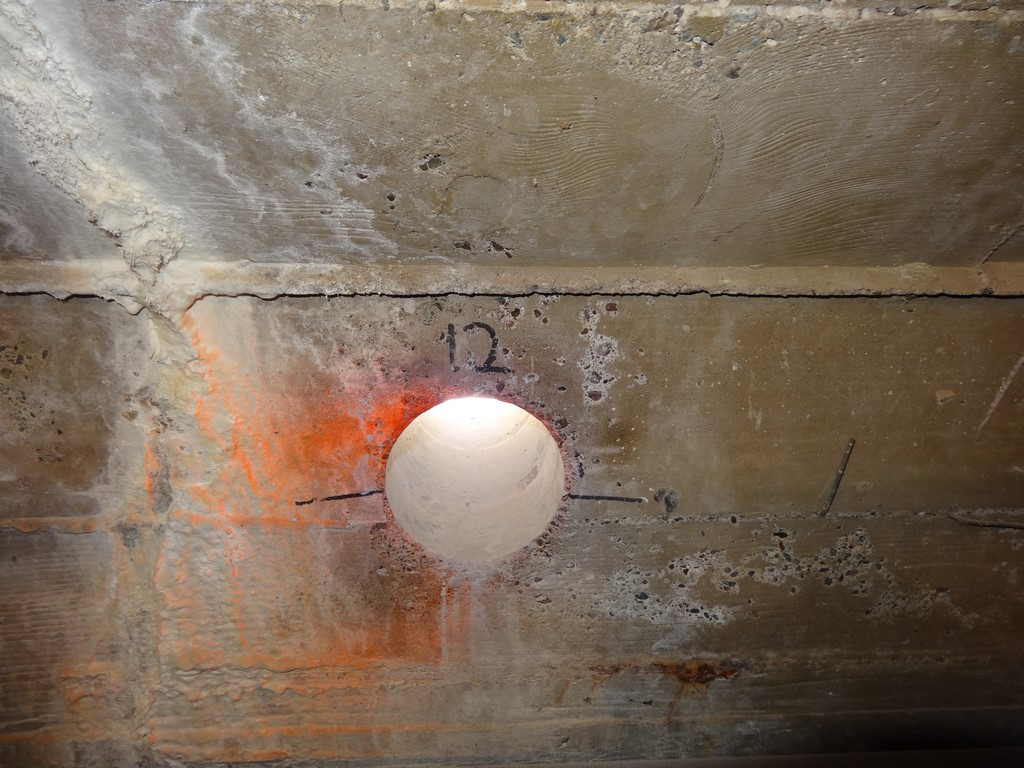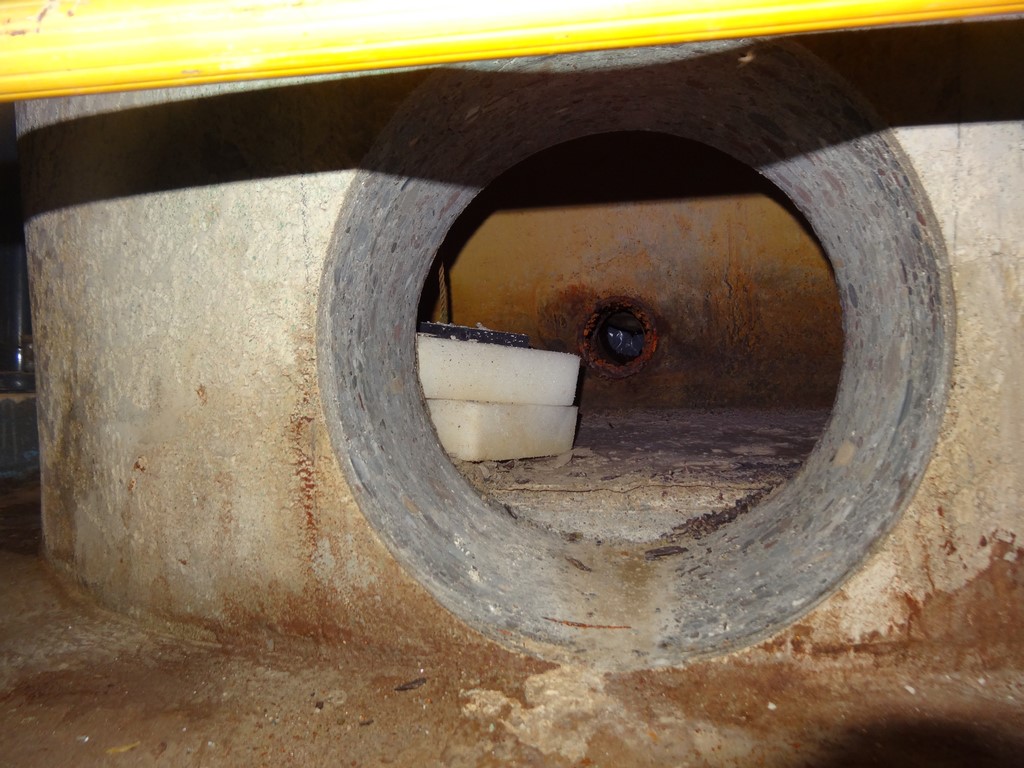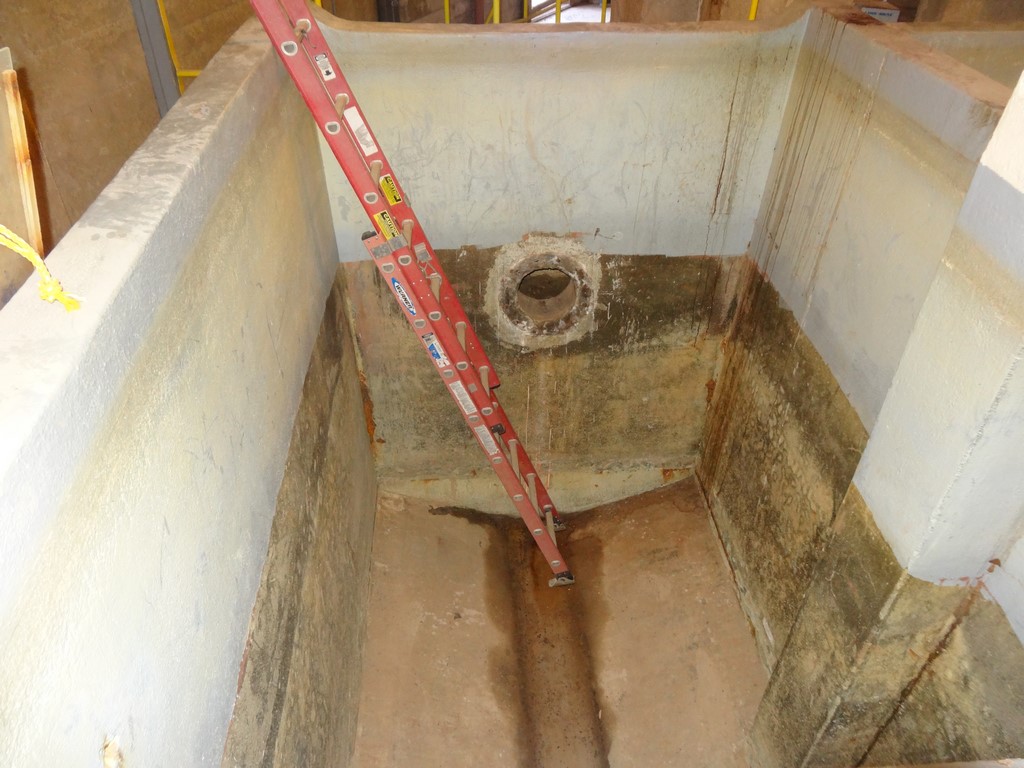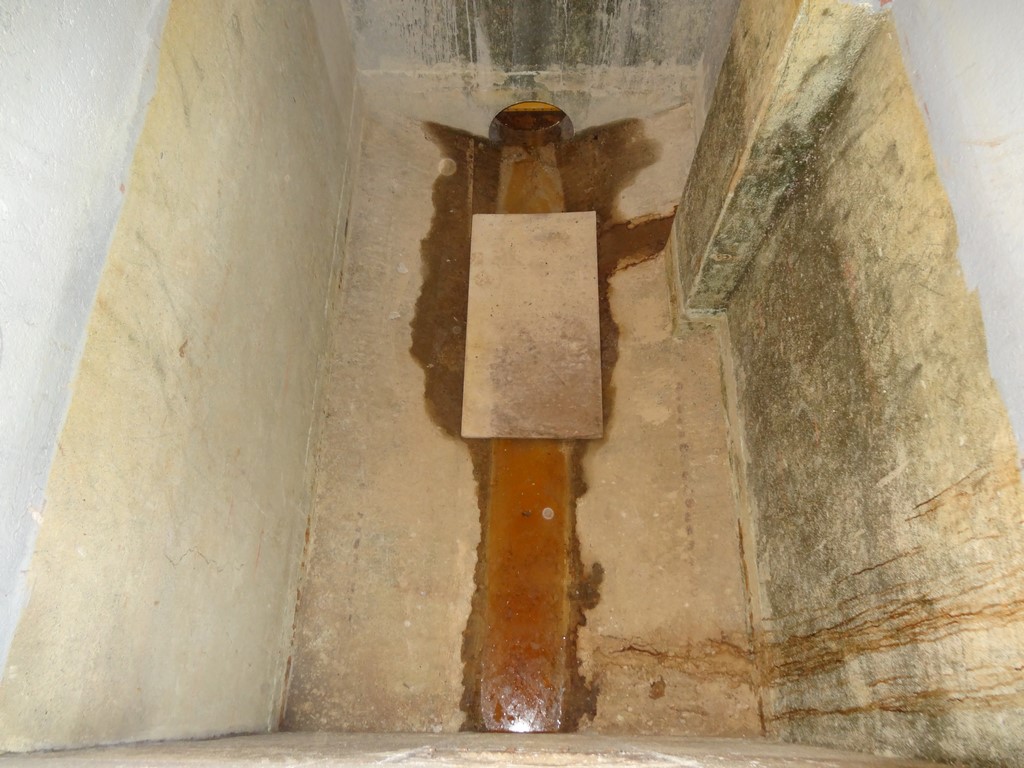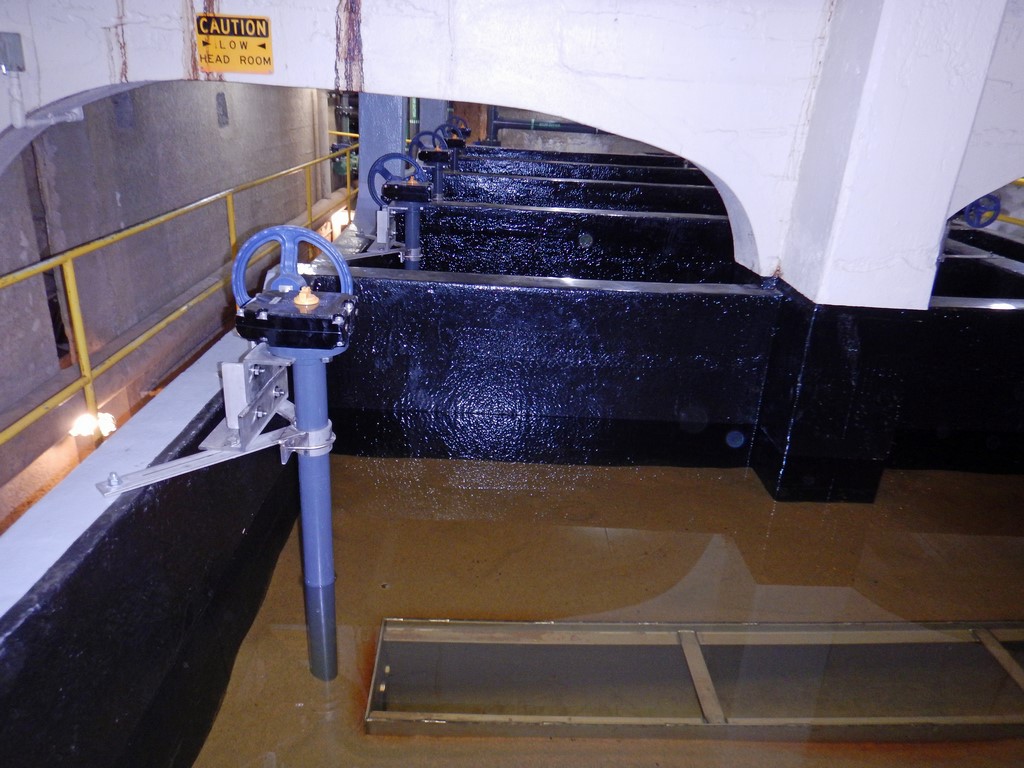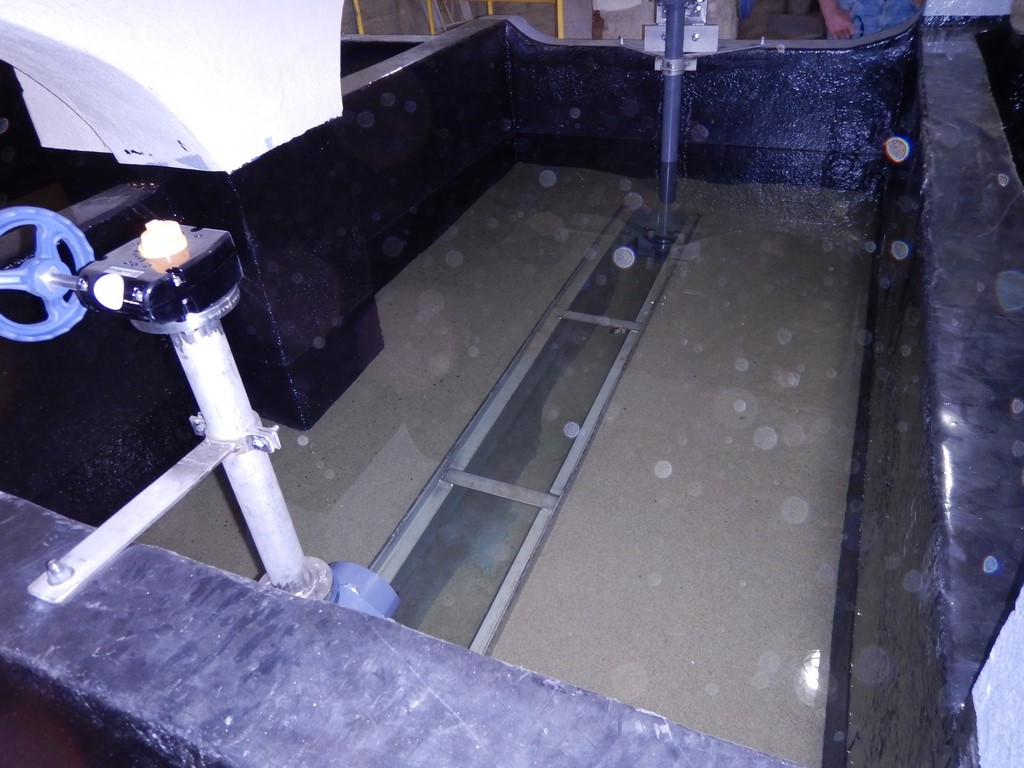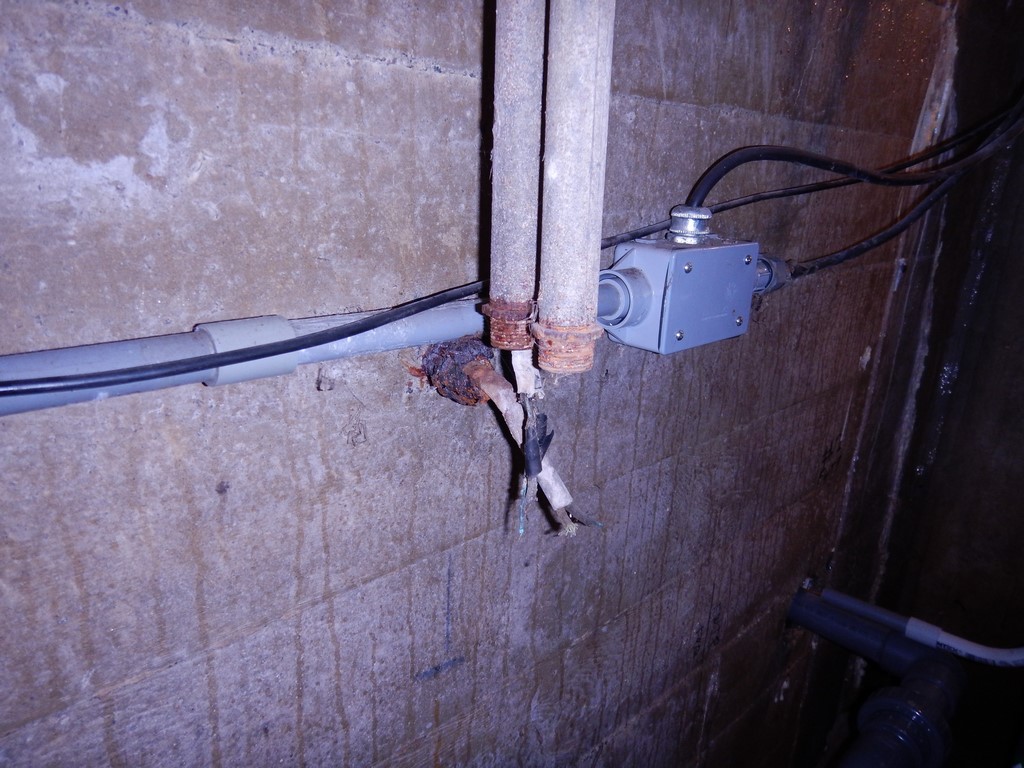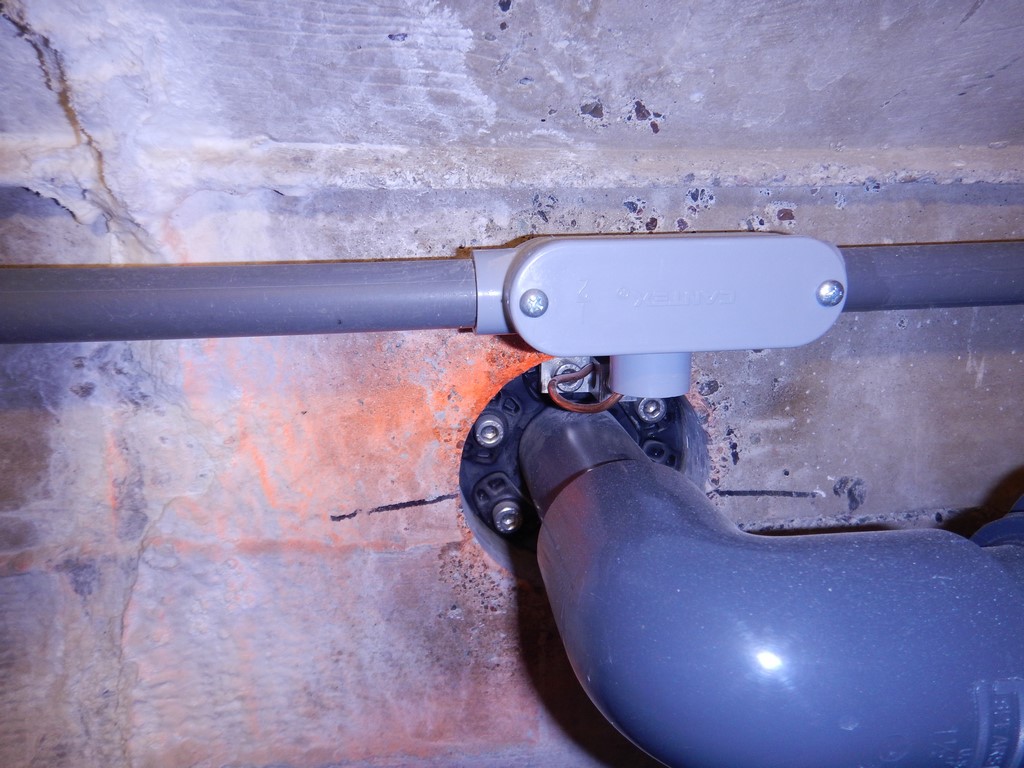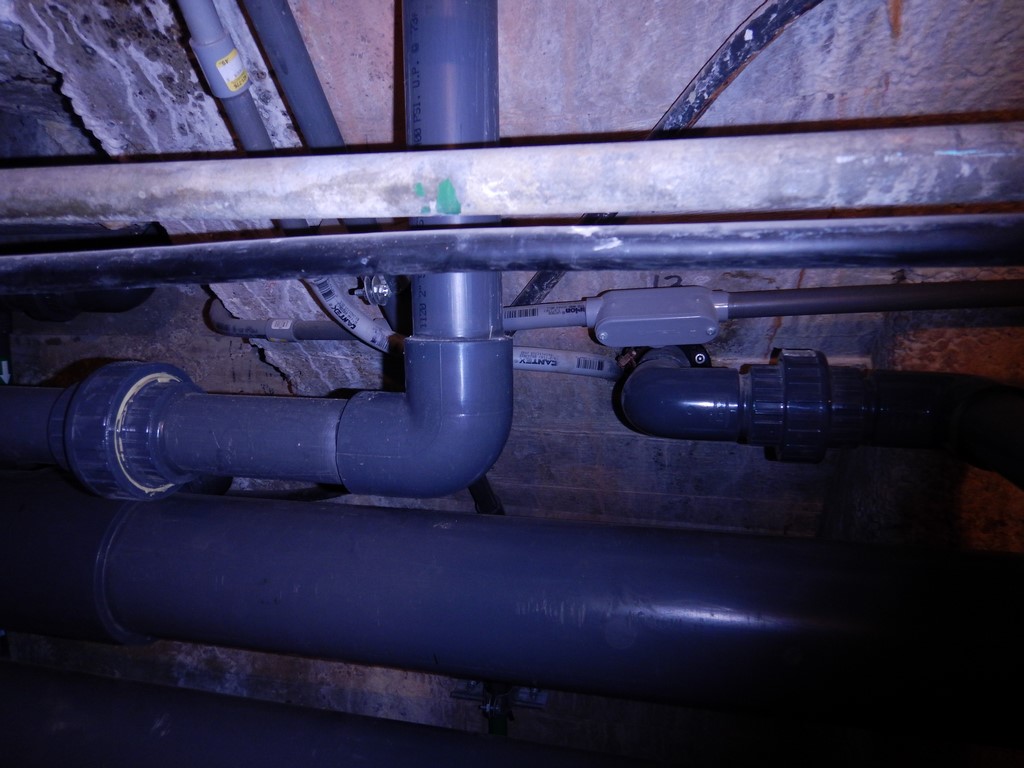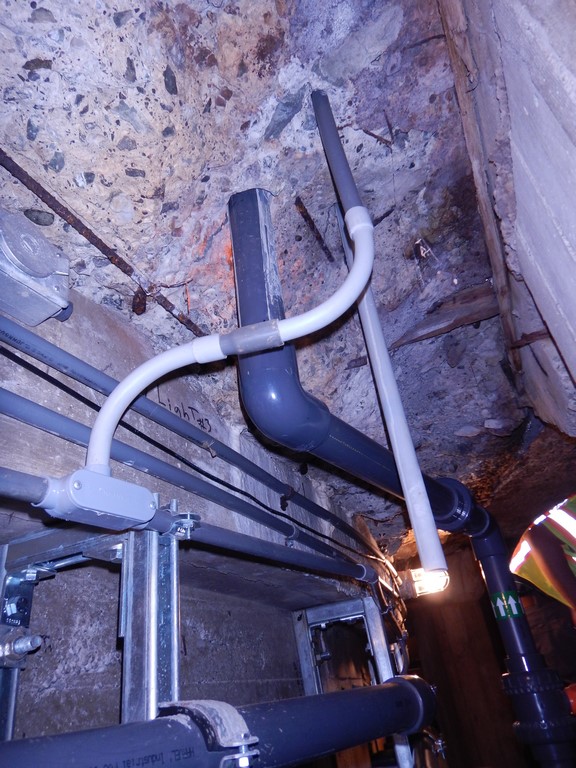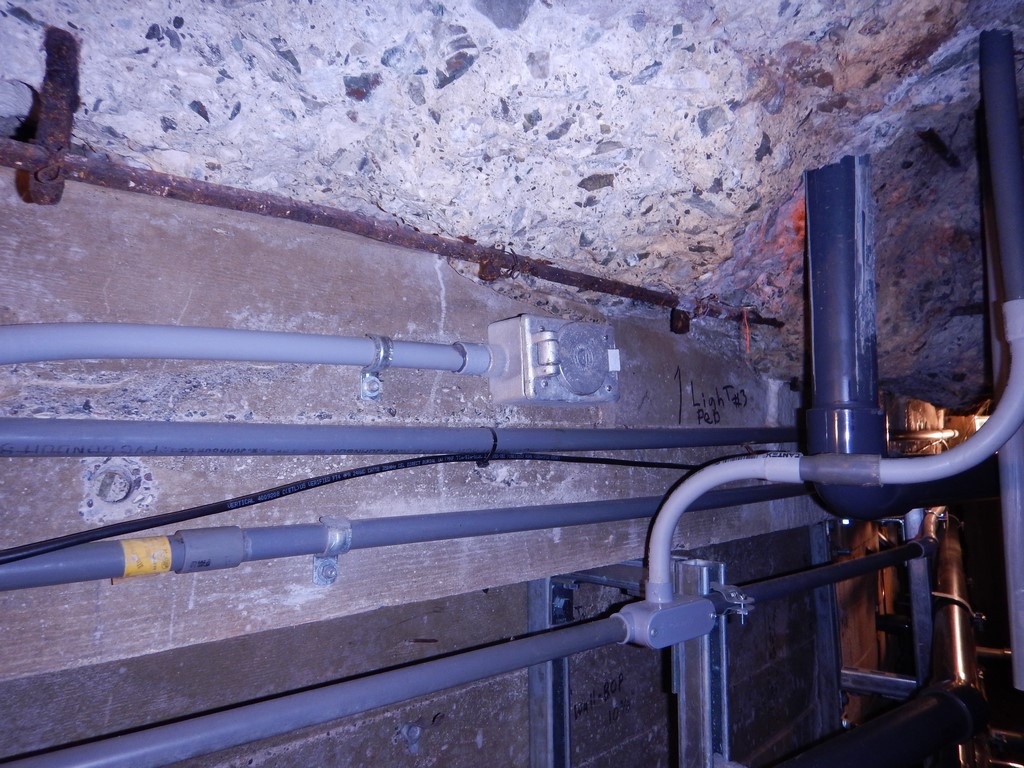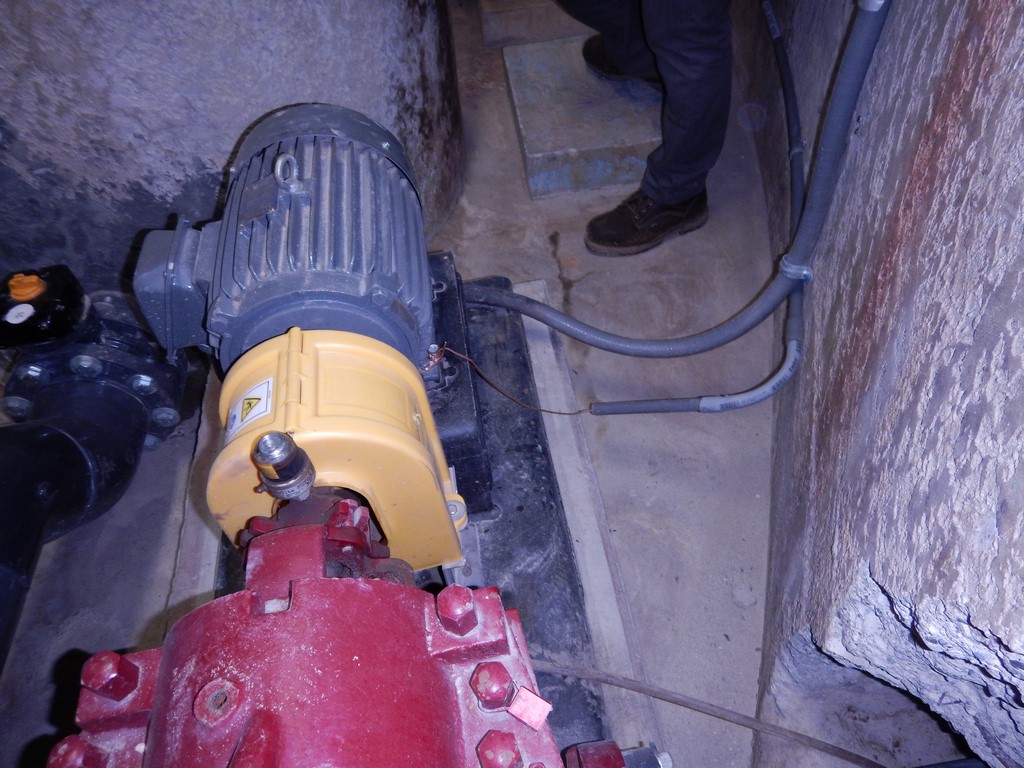Beneath the Shell

It’s not often that an opportunity to work on anything as renowned as the Neptune Pool comes around. Built first as a reflecting pool, transformed into an oval-shaped plunge pool and, as Hearst Castle assumed massive proportions, ultimately finished as a 350,000-gallon swimming pool that’s probably the most widely recognizedwatershape in the world, it’s a pleasure just to see it, let alone help preserve it for future generations.
We at Terracon, an engineering firm based in Olathe, Kans., came to the project through our acquisition late in 2014 of Rowley International, the aquatic design and engineering company based in Palos Verdes Estates, Calif. William Rowley, its principal and a specialist in sophisticated aquatic complexes – and, equally important in this context, in the restoration of historic watershapes – had been asked to conduct a forensic evaluation of the Neptune Pool and prepare engineering documents to guide its renewal.
He’s told the story of his participation in this project in a pair of articles for WaterShapes (click here and here); once he completed his work, we stepped up to address the practicalities of replacing the pool’s ferrous plumbing and of repairing its cracked shell – and then relining the pool’s interior surfaces with new marble tiles.
We’ll explore our own involvement with the Neptune Pool in a fresh pair of articles – this first one on the work beneath the shell, the next on what happened atop the shell. Both tasks were amazing: What would have been a complex set of procedures with any 80-year-old pool became a challenge of epic proportions because we were aware, constantly, that we were intimately engaged in restoring one of the world’s most beloved architectural treasures.
MAKING CONNECTIONS
The thing about a project like this one is that so many voices must be heard. It’s not simply a matter of evaluating the situation, developing a game plan and going at it, day by day, until everything is in working order. No, there are innumerable experts – architects, historians, architectural historians, state officials, state park officials and Hearst Castle administrators and staff – whose input and opinions had to be accommodated at every turn.
Happily, in the warren of passageways beneath the pool, the level of these inputs was somewhat limited by the fact that the results of what we might do would never be seen by the average Castle visitor. As a result, we had more freedom to get things done and keep moving along. But that’s not to underestimate what we had to accomplish down there, not by any means.
First, although we knew that water moved in pipes between points A and B (which we could see), sometimes the paths the pipes followed were obscured by twists and turns we could not track visually. Second, and as Bill Rowley mentioned in his articles, some of the existing ferrous pipes and fittings had diameters that may have been in common use in the 1920s and ’30s but are rarely if ever used today; this meant we had to drill cores around existing penetrations to allow for insertion of larger PVC pipes.
| Arriving on site, we encountered a ferrous piping system in an advanced state of decline – and piping runs that often couldn’t be traced by eye. So we worked system by system, replacing single runs to make certain we never crossed things up, and began a painstaking process in which one of the most common tasks was fishing through piles and boxes of fittings to find just the right one. We did our best to ‘organize’ things, but we still ran into pinch points where access was an issue and into places where convolutions were inevitable. |
Third, we couldn’t simply pull everything out and start over, because some lines were of uncertain purpose. So what we had to do was remove pipe runs system by system to make certain we had complete knowledge and control of the replacement process – more time consuming in that we had to work around pipes that would be removed later on, but better in the long run because we were able to tell exactly what we were doing.
So while the work may have been systematic and methodical, it was always interesting and challenging. In fact, as we became more and more deeply involved, we confirmed the fact that Julia Morgan, the architect/civil engineer who designed not only the succession of pools but the entire estate, was a genius with hydraulic systems and truly knew what she was doing.
| If the crews beneath the pool weren’t experts in core drilling when they arrived at the Neptune Pool, they likely knew more than they ever wanted to know by the time they finished. In many cases, as with the drains from the scum gutter, the process involved working around existing runs of ferrous pipe to create a larger hole for upsized PVC replacements; in others, as with the filter beds seen here, the core diameters were large – and there always seemed to be another hole requiring some drilling right nearby. |
In fact, most of the deficiencies we found were the result of later additions to her original systems – valves and other fittings that were added with the thought they’d be helpful or solve a specific problem but instead only added convolutions to an already complex system. Always with the historians on hand, we were able to strip away some of these accretions and in a few cases made our restorations more authentic than what we’d seen when we arrived on site.
The big change under the shell was, of course, switching out all of the ferrous pipes with Schedule 80 PVC replacements. We were working with large diameters for the most part – lots of runs of six-inch pipe, but also some ten- and 12-inch sections in the filtration beds – meaning the material was both heavy and inflexible. Unfortunately, the tunnels followed the shell’s curving contours, so there were lots of fittings involved.
And where we changed pipe diameters – for instance, replacing the inch-and-a-half-diameter ferrous pipes from the scum gutters with two-inch PVC versions – we had to core-drill around the existing pipes in a process that commonly involved drilling from both sides through concrete that was spectacularly hard and dense after decades of maturation.
PROGRESSING DAY BY DAY
Working underground wasn’t a miserable experience, but it was seldom easy.
For the most part, the passageways were meant for single-file use, and there were opportunities for head-banging at almost every turn. One consequence of this was special attention from representatives of the California Occupational Safety & Health Administration (CalOSHA), which in some specific areas even required that workers have special certification for work in claustrophobic spaces.
The head count of workers in the underground space varied from day to day, but there were generally enough people at work (sometimes dozens) that ventilation was an issue – meaning big fans were brought in to keep fresh, outside air moving throughout the underground space at a good rate.
| One of the larger tasks at hand underground involved repairing a refitting the five gravity-fed filter tanks located below the pool. Their size was truly impressive, and the fact that they had worked so well for so many years made us supremely motivated to restore them to good working order exactly per Julia Morgan’s plan. We even cleaned and reinserted the filter sand to keep things as authentic as possible. |
So the work moved along, system by system, pipe by pipe, fitting by fitting – with new, carefully marked runs stacked on new racks. Gradually, the old pipes vanished – and through these transitions we figured out the function of every piping run we encountered.
Ultimately, the plumbing crew managed to find and replace every single inch of ferrous pipe, with one exception: We could and did take care of all of the pressurized lines in the various circulating systems, but down below the pool we encountered a ferrous overflow drain line that started in a block of concrete and took an untraceable path to an outlet somewhere down the slope beyond the pool.
| Setting up the first-ever grounding system for the Neptune Pool was certainly the most historically aggressive of all tasks performed on site (see the sidebar below for details). The electricians ran new wires and snaked grounding wires wherever they needed to go by whatever means possible. The result was yet another network of underground pipes and fittings – all of them placed with basic safety in mind. |
In consultation with all of the decision-makers, we decided that, in this single case and for good reasons of budget, feasibility and lack of real need to do anything at all, we could let this one ferrous run stay as it had always been – a wise compromise, we all agreed.
For its part, work on the shell required a good amount of core drilling, but that was easy compared to what was required to renew the filtration system. There were five open tanks, all gravity-fed and all probably state of the art for 1930, but again it was a situation in which changes in standard pipe sizes required us to core drill new inlet and outlet ports to accommodate slightly larger PVC diameters – a huge, ornery task that had to be done ten times.
We also needed to repair cracks and waterproof the five tanks, which meant we had to remove the filter sand perhaps for the first time since the circulation system had been initiated in the 1920s. Some of it had turned into a material resembling concrete, so removal was an arduous process. But this being an historical restoration, we needed to break it up, clean it and put it back: The system had worked brilliantly for more than 80 years using this very filtration medium, so changing it to a modern alternative was out of the question!
SEEING RESULTS
All of our work below the shell pointed to the big day when we’d open the sluices from the Castle’s reservoir and refill the pool for a test of its watertightness.
|
On Grounding As William Rowley mentioned in his articles, grounding the shell and various electrical systems operating around the pool was among the most intrusive of all the things we did on site. Standards being what they were in the 1920s and ’30s, this wasn’t anything Julia Morgan or anyone on her engineering staff had ever considered. Once the shell was stripped, electricians came on site, chipped away at concrete to expose rebar and other ground-worthy items (including numerous lighting fixtures and statue bases) before running conduits to the space below the shell to create the Neptune Pool’s first grounding system. It was one time when modern safety concerns overruled the general desire to leave well enough alone! — M.R. |
The work of repairing the cracks in the shell had been completed by that point, as had waterproofing of the shell’s interior and all of its penetrations. Below ground, we needed to observe operation of the hydraulic system at normal operating pressures to see if any leaks developed at any of the updated penetrations or with new pumps, valves or fittings.
It was a multi-day process marked by lots of nervous anticipation – and happy results in that all systems, above and below, passed their tests in good order.
In some respects, this meant that our underground work had come to a close. That wasn’t entirely true, of course, because there were additional months of work to be done in relining the shell with marble tiles: We were constantly aware that those application processes might create leaks at any of the dozens of penetrations found throughout the pool.
But for the moment at least, we were able to take both pride and pleasure in “completing” in a tough, sweaty job – one very well done.
Next time, we’ll move to the great outdoors to trace the process of repairing the shell and restoring the grand pool’s interior finish.
Matthew Reynolds, P.E., is Department Manager – Professional at Terracon’s office in Concord, Calif., where he oversees the aquatics design and production team for the firm. A graduate of Loyola Marymount University (LMU) in Los Angeles with a bachelor’s degree in civil engineering, he is professionally licensed in Arizona, California, Colorado, and Oregon. He played on the water polo team all four years at LMU. At Terracon, he acts as the main point of contact with clients through all project phases, from the initial request for proposal to completion of the construction process. He may be reached at [email protected].










